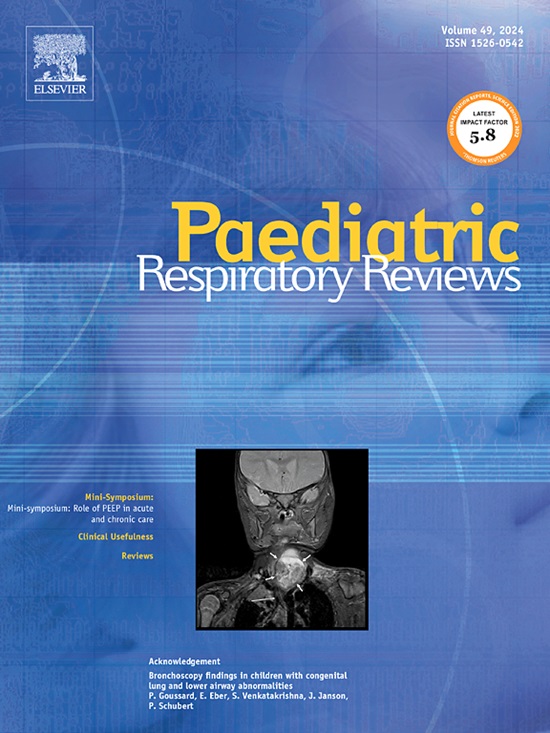Comparison of video laryngoscopy and direct laryngoscopy for urgent intubation in newborn infants: A meta-analysis
IF 4
3区 医学
Q1 PEDIATRICS
引用次数: 0
Abstract
Background
Securing a stable airway is a critical component in neonatal resuscitation. Compared to direct laryngoscopy, video laryngoscopy provides improved visualization of the glottis, potentially enhancing the success rate of intubation. This systematic review and meta-analysis were conducted to assess and compare the efficacy and safety of video laryngoscopy versus direct laryngoscopy in neonatal intubation.
Methods
A thorough search was performed across CENTRAL, Embase, and PubMed databases to identify relevant randomized controlled trials (RCTs) that evaluated the use of video laryngoscopy in comparison with direct laryngoscopy for neonatal intubation. The data extraction and analysis were conducted in alignment with Cochrane guidelines. The primary outcome of interest was the time required for intubation, while secondary outcomes included the number of intubation attempts and the success rate on the first attempt.
Results
The meta-analysis included nine RCTs, encompassing a total of 719 neonates. The findings revealed that video laryngoscopy was associated with a longer intubation time (mean difference [MD] 3.23 s, 95 % confidence interval [CI] 2.42 to 4.04; I2 = 96 %). However, it also significantly improved the first-attempt success rate (risk ratio [RR] 1.31, 95 % CI 1.20 to 1.44; I2 = 76 %) and borderline reduced the total number of intubation attempts (MD −0.08, 95 % CI −0.15 to 0.00; I2 = 53 %).
Conclusions
While video laryngoscopy is associated with a modest increase in intubation time, it provides clear benefits by enhancing the success rate of first-attempt intubations and reducing the need for multiple attempts in neonatal intubation procedures.
视频喉镜与直接喉镜在新生儿紧急插管中的比较:荟萃分析。
背景:确保气道稳定是新生儿复苏的关键组成部分。与直接喉镜相比,视频喉镜提供了更好的声门可视化,潜在地提高了插管的成功率。本系统综述和荟萃分析旨在评估和比较视频喉镜与直接喉镜在新生儿插管中的有效性和安全性。方法:通过CENTRAL、Embase和PubMed数据库进行全面检索,以确定相关的随机对照试验(rct),这些试验评估了在新生儿插管中使用视频喉镜与直接喉镜的比较。数据提取和分析按照Cochrane指南进行。主要结局是插管所需的时间,而次要结局包括插管次数和第一次尝试的成功率。结果:meta分析纳入9项随机对照试验,共纳入719名新生儿。结果显示,视频喉镜检查与较长的插管时间相关(平均差[MD] 3.23 s, 95%可信区间[CI] 2.42 ~ 4.04;i2 = 96%)。然而,它也显著提高了首次尝试成功率(风险比[RR] 1.31, 95% CI 1.20 ~ 1.44;I2 = 76%)和borderline降低了总插管次数(MD -0.08, 95% CI -0.15 ~ 0.00;i2 = 53%)。结论:虽然视频喉镜与插管时间的适度增加有关,但它通过提高首次插管成功率和减少新生儿插管过程中多次尝试的需要,提供了明显的好处。
本文章由计算机程序翻译,如有差异,请以英文原文为准。
求助全文
约1分钟内获得全文
求助全文
来源期刊

Paediatric Respiratory Reviews
医学-呼吸系统
CiteScore
12.50
自引率
0.00%
发文量
40
审稿时长
23 days
期刊介绍:
Paediatric Respiratory Reviews offers authors the opportunity to submit their own editorials, educational reviews and short communications on topics relevant to paediatric respiratory medicine. These peer reviewed contributions will complement the commissioned reviews which will continue to form an integral part of the journal.
Subjects covered include:
• Epidemiology
• Immunology and cell biology
• Physiology
• Occupational disorders
• The role of allergens and pollutants
A particular emphasis is given to the recommendation of "best practice" for primary care physicians and paediatricians.
Paediatric Respiratory Reviews is aimed at general paediatricians but it should also be read by specialist paediatric physicians and nurses, respiratory physicians and general practitioners.
It is a journal for those who are busy and do not have time to read systematically through literature, but who need to stay up to date in the field of paediatric respiratory and sleep medicine.
 求助内容:
求助内容: 应助结果提醒方式:
应助结果提醒方式:


